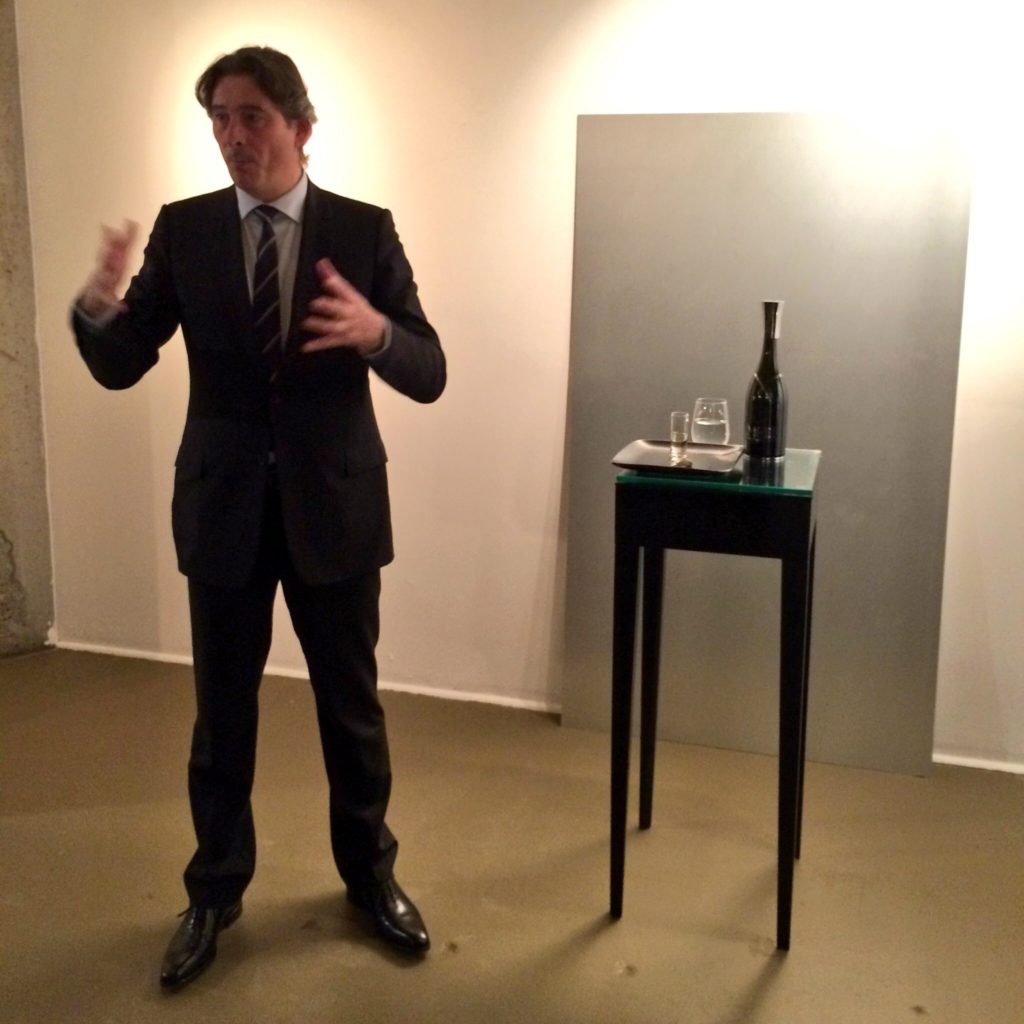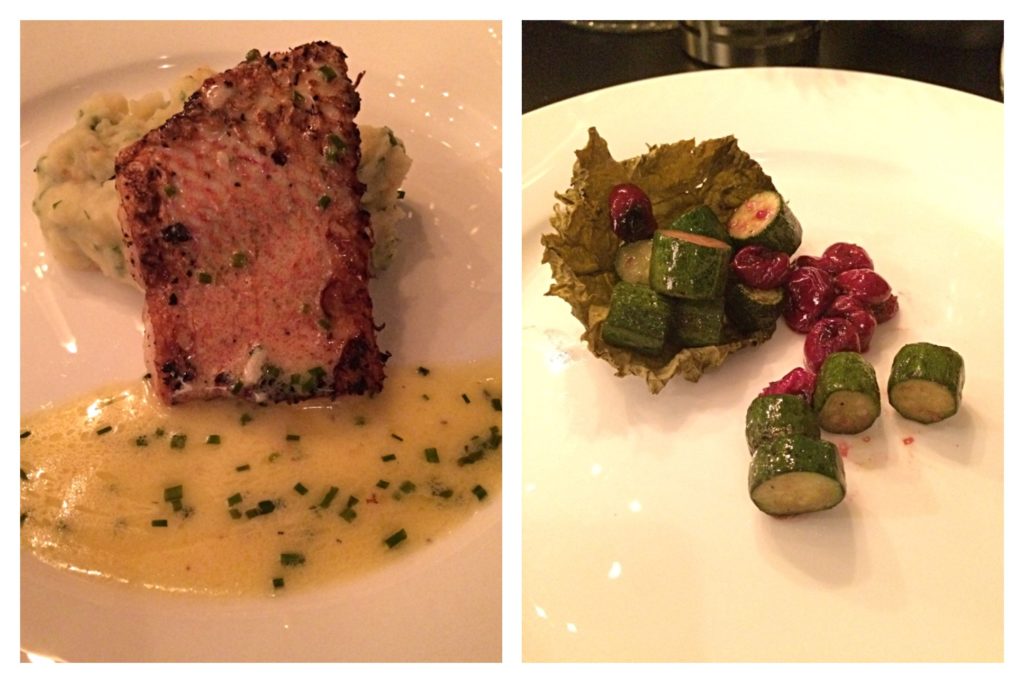Great wine isn’t just about what it tastes like. It’s important to get the experience around it as well. As a writer I am fortunate enough to have the opportunity to taste many great wines that I will simply refer to as “out of the budget”. I have tasted Dom Perignon and Krug and I know that I prefer one over the other — If it was in the budget Krug wins every time. The thing about tasting high end wines is it gives you perspective and can readjust what you think is an affordable wine. I realize this is pricy for many but the average cost for a bottle of wine in my household is around twenty dollars.
When I arrived at Arta Gallery in the Distillery district I was greeted with a glass of Brut Imperial (LCBO 453084/$63.95). Not a bad way to start an evening. I was then guided through what goes into a bottle of MCIII. It was fascinating to learn that this wine is made up a sum of parts coming from several different vintages and backgrounds. We were guided through the tasting by Chef de Cave Benoit Gouez. A great bottle of Champagne is all about complexity of flavours and that was definitely a theme for the night.

Chef de Cave Benoit Gouez explains how Stainless Steel aged Chardonnay makes up one part of MCIII
The finished bottles of MCIII were presented in different places in an art gallery as Benoit walked us through each part of the wine. I was given the opportunity to taste the base wines that go into the final blend. It’s interesting to get a chance to see what goes into the final bottle. The first sample was so pale it was essentially clear. The first part of the wine comes from Stainless steel aged juice. Chardonnay and Pinot Noir that is very gently pressed to let just the juice run off from the 2003 vintage is added to the final blend to bring lively fruit to the bottle.
The second stage comes from base wines that have been aged in barrels and then moved to stainless steel. This adds some roundness to the flavours in the bottle. The thing about base wines for Champagne is that they are VERY acidic. These are not wines that you’re going to want to sip on and enjoy on their own. But the interesting part is that you can see the direction the wine is going to take from these base wines. It’s a lot like seeing a trailer for a summer blockbuster. Wines from the 1998, 2000, 2002 vintages are used.
The third stage is made up of wines that have been aging in bottle from the 1993, 1998, and 1999 vintages. These wines would have been made when I was in grades 5, 10 and 11 respectively when these grapes were harvested. Using these wines in the blend essentially give you instant maturity and complexity in the bottle. My final thought on the construction of this wine can only be described as awe. When you are blending a wine in Bordeaux you will carefully craft a final wine using parts of a specific vintage. It is not usual to see wines made from pieces of vintages that span over a decade. But when you take a step back and get a chance to taste the pieces on their own what a broad palette has been used to make this wine.

So what exactly do you serve with a new top Champagne? A menu was created to pair with the wine and recipes were duplicated by chefs in house. Given the versatility of Champagne though, this wine will pair with just about anything you can serve. What is interesting is HOW the wine was served. If you’re not a wine geek you may not know that there is great controversy stirring about the proper way to serve Champagne these days. Gone are the days of the long and narrow flutes being standard. In my own home I am using regular white wine glasses to allow some of the more complex aromas and flavours fill the glass rather than trapping them in a small narrow flute. The wine was served in gorgeous Zalto stems that were engraved with the MCIII logo at the base. If you have never had a chance to try the Zalto stems trust me … it’s worth it. In the picture above are two of the four courses we were offered. Red Snapper, Mashed Potato with Parsley butter was cooked to perfection. I also realized that I am officially a grown up because the Zucchini course served with Cherry was also something I really enjoyed (Mom, I’m finally eating my veggies!).
SO. What does the wine taste like?
Moët et Chandon MCIII – Vintages TBD – Price TBD (approx $700.00) – ***** – This wine is made up of parts from seven different vintages and styles. The final product is focused and complex. The nose offers up a immediate notes of fruit with apple, lemon and extremely subtle hints of spice. Once you can get past all the bright lively fruit notes you find freshly baked bread. The flavours of this wine are deep and complex. There are subtle vanilla and nutty notes around the edges and they make an appearance on the second, third and fourth sips. The first sip is driven by the bright fruit flavours that are present in the nose. Lemon, Lime, Apples and just a slight hint of spice. I was lucky enough to enjoy this paired with Red Snapper and slow cooked should of Lamb. But, if/when I get my hand on a second bottle I will be pairing this with only the best company. This may be out of reach for most as an every day bottle of wine but for a special occasion this would be an epic addition. In the immortal words of Ferris Bueller “If you have the means I highly recommend picking one up”


